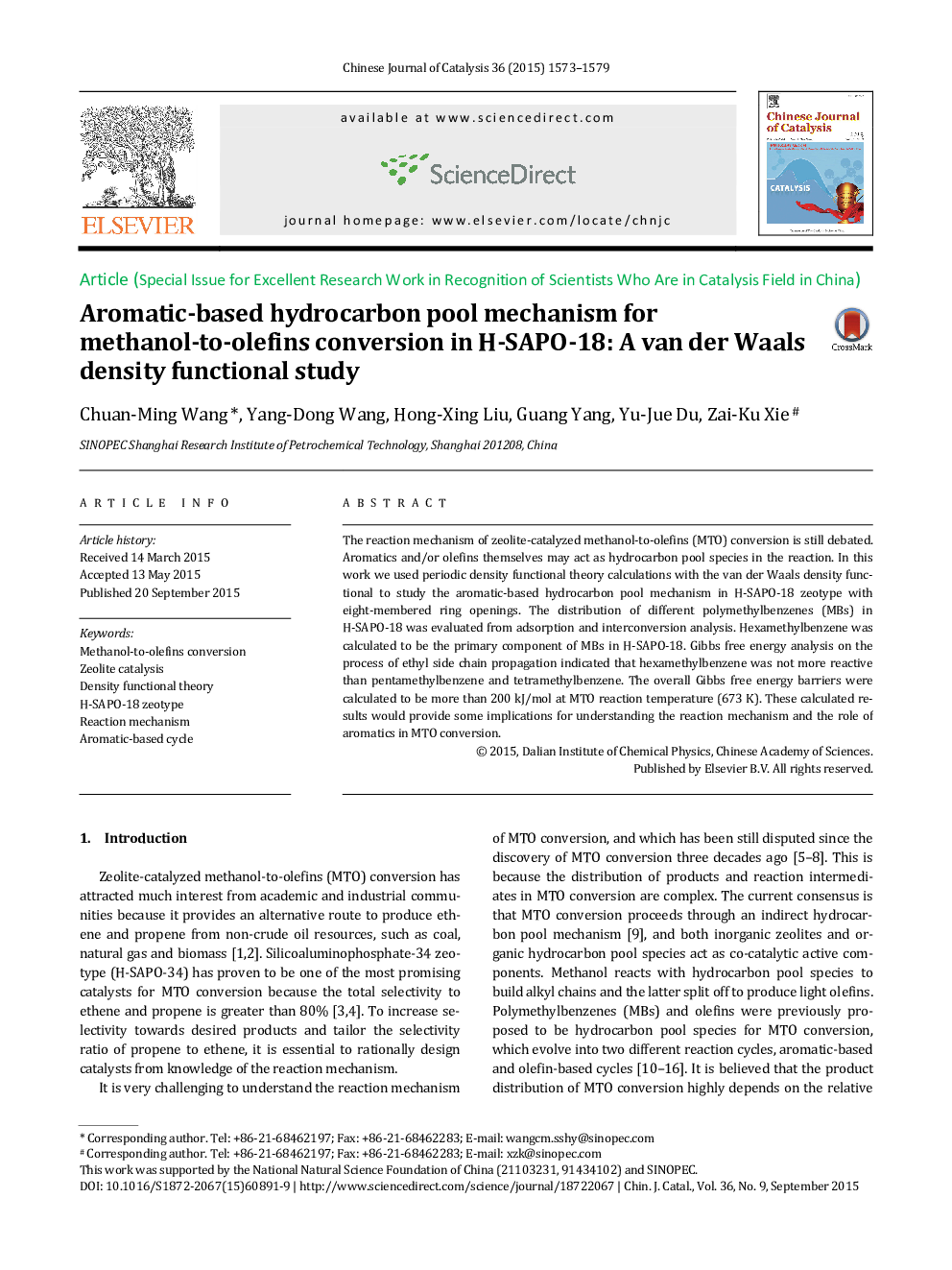| Article ID | Journal | Published Year | Pages | File Type |
|---|---|---|---|---|
| 59057 | Chinese Journal of Catalysis | 2015 | 7 Pages |
The reaction mechanism of zeolite-catalyzed methanol-to-olefins (MTO) conversion is still debated. Aromatics and/or olefins themselves may act as hydrocarbon pool species in the reaction. In this work we used periodic density functional theory calculations with the van der Waals density functional to study the aromatic-based hydrocarbon pool mechanism in H-SAPO-18 zeotype with eight-membered ring openings. The distribution of different polymethylbenzenes (MBs) in H-SAPO-18 was evaluated from adsorption and interconversion analysis. Hexamethylbenzene was calculated to be the primary component of MBs in H-SAPO-18. Gibbs free energy analysis on the process of ethyl side chain propagation indicated that hexamethylbenzene was not more reactive than pentamethylbenzene and tetramethylbenzene. The overall Gibbs free energy barriers were calculated to be more than 200 kJ/mol at MTO reaction temperature (673 K). These calculated results would provide some implications for understanding the reaction mechanism and the role of aromatics in MTO conversion.
Graphical AbstractHexamethylbenzene was theoretically proven to be the primary component of methylbenzenes in H-SAPO-18. The overall Gibbs free energy barriers of the aromatic-based cycle were greater than 200 kJ/mol at 673 K in H-SAPO-18.Figure optionsDownload full-size imageDownload as PowerPoint slide
